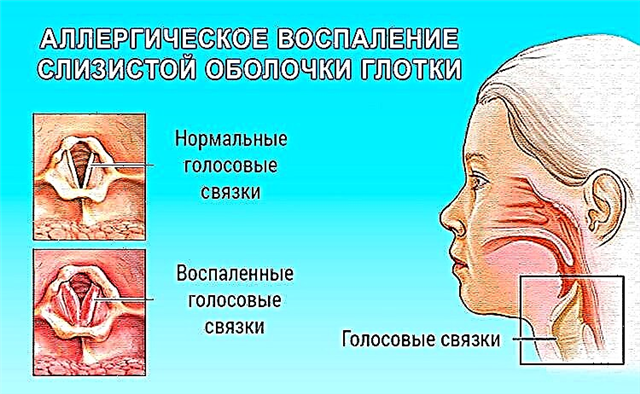 How to treat a fungus in the throat? Uncomplicated ENT diseases are treated with topical antifungal agents. In the presence of symptoms of intoxication and complications, systemic antimycotics, antiallergic and anti-inflammatory drugs are introduced into the therapy regimen.
How to treat a fungus in the throat? Uncomplicated ENT diseases are treated with topical antifungal agents. In the presence of symptoms of intoxication and complications, systemic antimycotics, antiallergic and anti-inflammatory drugs are introduced into the therapy regimen.
In most cases, fungal pharyngitis is accompanied by dysbiosis and immunological disorders.
To correct them, the patient is prescribed immunostimulating agents and probiotics.
Treatment methods
How and how to treat a throat fungus? Pharyngomycosis rarely develops as an independent disease. In most cases, fungal infection of the ENT organs is preceded by infectious diseases of bacterial or viral etiology. Therapy of mycoses is limited to the intake of antifungal drugs and immunostimulating agents.
Treatment of candidal pharyngitis is based on three main principles:
- replacement of previously prescribed antimicrobial agents with local and systemic antimycotics;
- elimination of disturbances in the intestinal microbiocenosis by taking probiotics and gentle antibacterial drugs;
- correction of the immune status with the help of immunostimulants and interferon preparations.
The reproduction of opportunistic fungi in the throat is facilitated by a decrease in immunity.
Topical antifungal sprays, aerosols, ointments, and gargles are commonly used to treat uncomplicated mycosis of the throat in adults. And only in case of ineffectiveness of therapy, the patient is prescribed systemic drugs. Why?
Most systemic antimycotics, especially synthetic ones, contain substances that negatively affect the condition of the kidneys. Long-term use of drugs can lead to complications, therefore they are not used to treat patients suffering from renal failure, pyelonephritis, etc.
Systemic antimycotics
If candidal pharyngitis is diagnosed in the acute stage of development, the average course of therapy with antimycotic drugs will be 10-14 days. Uncomplicated forms of the disease are treated on an outpatient basis, but if the fungal flora also affects the lower respiratory tract, the patient is hospitalized. Systemic antifungal drugs are conventionally divided into 3 categories, namely:
| Group of drugs | Operating principle | Name of drugs |
|---|---|---|
| polyenes | damage the cellular structures of mold and yeast-like fungi, which leads to their death |
|
| allylamines | have a pronounced antifungal (fungicidal) effect against dermatophytes and yeast-like fungi |
|
| azoles | inhibit the activity of fungi and prevent the spread of spores in the laryngopharyngeal mucosa |
|
As a rule, treatment of a yeast-like fungus of the throat is carried out with the help of "Fluconazole". The drug rarely causes allergic reactions, therefore it is well tolerated by patients. The dosage is selected individually, depending on the severity of the inflammatory processes and the patient's age.
In cases where standard antimycotic therapy does not give positive results, intravenous administration of "Amphotericin B" is prescribed to patients. In the course of treatment, the doctor must monitor the patient's condition, since the medicine has a pronounced toxic effect. To destroy mold fungi, "Terbinofin" or "Intraconazole" is introduced into the treatment regimen.
Throat antiseptics
An anti-fungal pill is not the only treatment for mycoses in the throat. To speed up the healing process, patients are prescribed sanitizing procedures. Local therapy is carried out using antiseptic solutions, which destroy not only the fungal, but also the bacterial flora in the lesions.
Washing and rinsing can cleanse the mucous membrane of the throat and palatine tonsils from pathogens and their waste products. Antiseptic drugs create unfavorable conditions for the growth of fungi in the mouth and throat. The gambling club https://columbuscasinoo.ru will open for you the boundless world of excitement. With regular sanitizing procedures, the symptoms of general intoxication quickly disappear, due to which the patient's well-being improves.
In most cases, local treatment of the fungus is carried out with the help of solution preparations such as:
- Miramistin;
- Yoks;
- "Stomatofit";
- Chlorophyllipt;
- "Lugol's solution";
- "Hexoral";
- Sage Doctor Theiss.
Important! During therapy, it is not recommended to swallow antiseptics, as they can disrupt the normal intestinal microflora.
During the selection of suitable disinfectants, the attending physician should warn the patient that the drugs must be alternated every 5-7 days. If this is not done, the effectiveness of therapy will decrease. The fungal flora is able to adapt to the action of antiseptics, therefore, it is advisable to choose at least 2 or 3 suitable preparations for gargling.
Probiotics
Dysbacteriosis is one of the key reasons for a decrease in the body's immune defense, which can provoke the reproduction of opportunistic fungi in the respiratory tract. Elimination of disturbances in the microbiocenosis of the gastrointestinal tract increases the body's resistance to pathogenic agents. To restore the microflora in the intestines, it is necessary to take probiotics.
Probiotic is a drug that contains beneficial microorganisms that produce folic acid, biotin and organic acids. Non-pathogenic bacteria protect the gastrointestinal mucosa from the effects of toxic substances, which helps to reduce the severity of symptoms of intoxication. For the treatment of candidal pharyngitis and the restoration of intestinal microflora, they usually use:
- Linex;
- "Normobakt";
- "Bifiform";
- Florin Forte;
- "Biosporin";
- "Probifor".
Probiotics should not be overused as this can lead to cytokine imbalances, kidney stones and allergies.
The elimination of provoking factors that cause a decrease in local immunity makes it possible to increase the body's resistance not only to fungi, but also to other pathogens - microbes, viruses, chlamydia, etc. Restoration of the microbiocenosis in the intestine reduces the likelihood of developing acute respiratory viral infections, tonsillitis, flu and other respiratory diseases.
Immunostimulating drugs
 Immunostimulating therapy is a traditional way to increase the body's resistance to fungal pathogens. Immunostimulants activate phagocytes, granulocytes and neutrophils, which destroy pathogens in the respiratory system. They contain components that promote the production of interferon and increase cellular immunity. To increase the reactivity of the body, they often use:
Immunostimulating therapy is a traditional way to increase the body's resistance to fungal pathogens. Immunostimulants activate phagocytes, granulocytes and neutrophils, which destroy pathogens in the respiratory system. They contain components that promote the production of interferon and increase cellular immunity. To increase the reactivity of the body, they often use:
- Anaferon;
- Amiksin;
- "Imudon";
- Laferon;
- "Poludan".
You should be aware that immunostimulating medications can cause adverse reactions. Therefore, the dosage of drugs should be determined only by the attending physician after examining the patient and obtaining the results of the microbiological analysis.
Drugs that increase nonspecific immunity are used not only for treatment, but also for the prevention of fungal diseases. They are also recommended for patients suffering from chronic candidal pharyngitis.
Folk remedies
It should be noted right away that it is impossible to cure mycosis of the throat with folk remedies. They only alleviate the symptoms of the disease and stimulate the elimination of antibodies from the fungi that poison the body from the tissues. Calendula, lingonberry, bird cherry and parsley have pronounced fungistatic properties. Infusions and decoctions of medicinal plants should be taken for at least 2 weeks in order to achieve the desired therapeutic results.
When preparing remedies for fungus in the throat, you can use the following recipes:
- mix 5 g of chopped St. John's wort and lingonberry leaves, pour 200 ml of boiling water over the raw materials and leave for 3 hours; gargle sore throat with strained infusion at least 3 times a day;
- mix in 1 tbsp. l. peppermint leaves and dried calendula flowers, pour 300 ml of water over the herbs and boil for 3 minutes; flush the throat with strained broth 2-3 times a day;
- Pour 20 g of parsley roots and leaves with ½ liter of water and simmer over low heat for 5 minutes; rinse with warm broth 4 times a day for at least 10 days in a row.
The above agents have anti-inflammatory and disinfectant effects. If you regularly sanitize the throat, it will speed up the healing process of the mucous membrane and help clear it of white curdled plaque.



